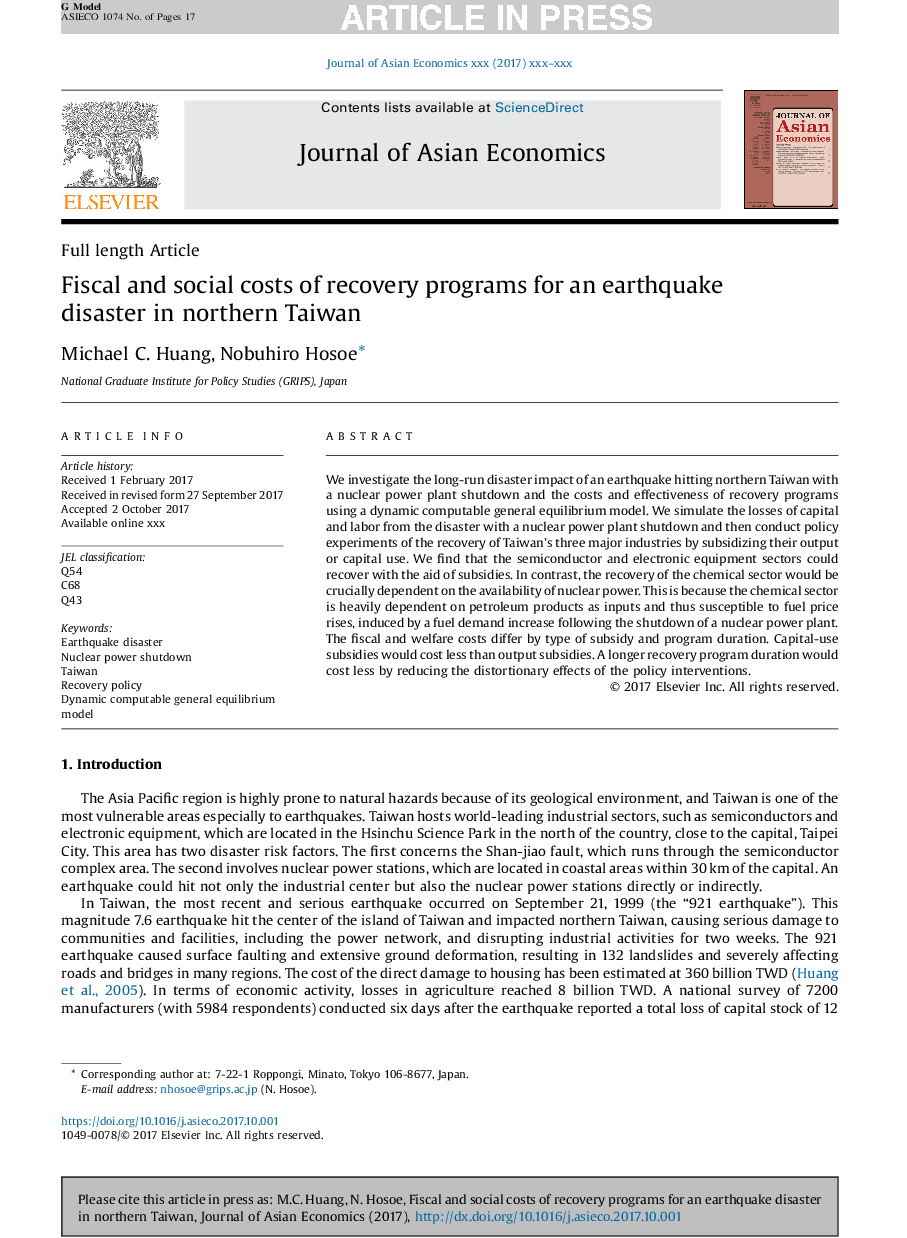| Article ID | Journal | Published Year | Pages | File Type |
|---|---|---|---|---|
| 7356430 | Journal of Asian Economics | 2017 | 17 Pages |
Abstract
We investigate the long-run disaster impact of an earthquake hitting northern Taiwan with a nuclear power plant shutdown and the costs and effectiveness of recovery programs using a dynamic computable general equilibrium model. We simulate the losses of capital and labor from the disaster with a nuclear power plant shutdown and then conduct policy experiments of the recovery of Taiwan's three major industries by subsidizing their output or capital use. We find that the semiconductor and electronic equipment sectors could recover with the aid of subsidies. In contrast, the recovery of the chemical sector would be crucially dependent on the availability of nuclear power. This is because the chemical sector is heavily dependent on petroleum products as inputs and thus susceptible to fuel price rises, induced by a fuel demand increase following the shutdown of a nuclear power plant. The fiscal and welfare costs differ by type of subsidy and program duration. Capital-use subsidies would cost less than output subsidies. A longer recovery program duration would cost less by reducing the distortionary effects of the policy interventions.
Related Topics
Social Sciences and Humanities
Economics, Econometrics and Finance
Economics and Econometrics
Authors
Michael C. Huang, Nobuhiro Hosoe,
